1. Learning Technologies
1.1. Media Ecology
1.1.1. Technology influences society
1.1.2. According to the Media Ecology Association, Media Ecology is the study of media environments, the idea that technology and techniques, modes of information and codes of communication play a leading role in human affairs
1.1.3. Sees that humans are affected by technology
1.2. Social Construction of Technology (SCOT)
1.2.1. Sees that human activity shapes and effects technology
1.2.2. The success of a technology is socially determined and doesn't matter how good or bad the actual technology is
2. TPACK
2.1. Origins
2.1.1. PCK: Pedagogical Content Knowledge
2.1.1.1. Content Knowledge: Knowledge about the subject area
2.1.1.2. Pedagogical Knowledge: Knowledge about how to teach
2.1.1.3. PCK: Pedagogical Content Knowledge
2.1.1.3.1. pedagogical knowledge and content knowledge have much over-lapping
2.1.1.3.2. Subject-matter content transformed and influenced teaching
2.2. TPACK
2.2.1. Technological, pedagogical and content knowledge
2.2.2. Technological Knowledge: Knowledge of different types of technology tools that can be integrated into teaching and how to use them
2.2.2.1. How technology can be used to teach or conceptualize in new ways
2.3. Importance
2.3.1. Educators can conceptualize the role of technology in teaching and learning
2.3.2. creates a reflective framework to use technology purposefully in your classroom
2.3.3. Can use it for many areas including teacher professional development, teacher education, and lesson plan evaluation
3. Philosophy of Teachnology
3.1. Your beliefs about how technology can and should be used in your teaching practices
4. Behaviourism
4.1. Behaviourism looks at the brain as a blank slate and says that we learn from an outside stimulus
4.1.1. Sub Idea 1
4.1.2. Sub Idea 2
4.2. Key Ideas of Behaviourism
4.2.1. Behaviourists believe that repetition is key to learning
4.2.2. Kids learn from punishment and consequences
4.3. Primary mode of teaching is through lecture
4.4. Behaviourist Practices
4.4.1. Learning objectives / curriculum
4.4.2. Behaviour Analysis
4.4.3. Classroom Management Techniques
4.4.4. Reward systems
4.5. Behaviourist Technologies
4.5.1. Games such as Mathblaster, or other technologies like iClickers would be used in a behaviourist classroom
4.5.2. Other resources such as YouTube, TED Talks and Online tutorial sites would be considered Behaviourist as well
4.5.3. Computer Assisted Instruction (CAI) is another Behaviourist technology. CAI is where students work through content on a program and answer questions. Then, based on your answers, the computer will guide you to what section you need more help with
4.6. Behaviourism is not totally practical as it over simplifies learning. Also, to learn, students should not expect rewards and punishments and lastly, the mind is not a blank slate and people can adapt
5. Constructivism
5.1. People learn by building connections by actively interacting with the environment
5.1.1. Building knowledge from their own experiences
5.2. Learning is all about the individual and one cannot learn without doing
5.2.1. The teacher is seen as a facilitator
5.3. Uses problem based learning: Start with a large, complex problem and students will learn the basics as they work through the problem
5.4. Vygotsky's zone of proximal development: There is a specific point where kids will learn best. If they already know it, they'll lose interest but if the content is too far beyond them they'll become discouraged. Vygotsky says to gauge where the student is at and just push slightly ahead. That is what they'll learn best
5.5. Lego Robotics are a prime example of constructivist technologies and how they can be used in schools
5.6. Constructivism is a great way for students to learn, however it is very time consuming and difficult to assess. It also requires mature learnes and can have a different effect on every student
6. Cognitivism
6.1. Cognitivism came about in response to Behavioursim
6.1.1. The mind is not just a blank slate, but more like a computer. The brain's memory systems are active and organized processors of information
6.1.2. Prior knowledge is key to learning
6.2. Key Ideas of Cognitivism
6.2.1. Learning is based off of Schema/scaffolding
6.2.2. 3 types of memory
6.2.2.1. Sensory Memory, which is anything you are taking in; short term memory, which is now referred to as the working memory; and long term memory
6.2.3. Learning has to be meaningful and motivated
6.2.4. Seriality: you need a certain schema before moving on. For Example, You need to know what cognitivism is before you can discuss cognitivist technologies
6.2.5. You need to practice to build the schema and to retain the information
6.3. Cognitive Load Theory
6.4. Technologies
6.4.1. Concept maps, Prezi and databases- These all keep everything organized
